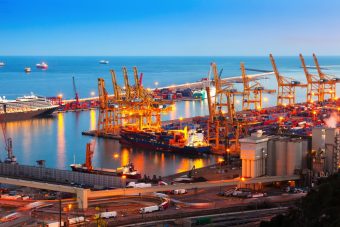
The chemical industry is an important segment of the global economy because it employs more than 15 million people worldwide and has global annual revenues of 5.7 trillion dollars, according to data from the Planet Tracker analytical centre.
We could hardly imagine life without a wide range of chemical products that we use daily, whose production requires fossil fuels, water, minerals, metals, and other resources.
However, this sector is experiencing increasing pressure to make its practices sustainable as the chemical industry is one of the biggest emitters of carbon dioxide and one of the biggest environmental polluters.
Consumers are increasingly demanding products that do not harm the environment or human health, while governments are introducing stricter regulations aimed at decarbonizing the chemical industry.
Many companies have turned to renewable energy sources to reduce their carbon footprint. Still, the question remains: how can we introduce the use of sustainable raw materials to produce chemicals?
Scientists from Griffith University in Australia are one step closer to a solution that will transform the polluting chemical industry into a sustainable one, using catalysts and waste resources.
More:
- FIRST REGIONAL E-WASTE PROJECT IN LATIN AMERICA COMES TO A XLOSE
- NEW EU RULES TO IMPROVE URBAN WASTEWATER TREATMENT AND REUSE
- UP TO 11 MILLION TONS OF PLASTIC AT THE BOTTOM OF THE OCEAN
Professor Karen Wilson explains that catalysis has historically played a key role in transforming fossil resources into basic fuels and products, creating an opportunity for a revolution in the chemical industry.
Scientists are looking for catalytic processes that will allow them to harness sustainable resources like organic waste, hoping to move the chemical industry from a linear to a circular economy.
“Catalytic processes could minimize reliance on limited fossil fuels and significantly curb CO2 emissions by using agricultural, municipal and plastic waste as feedstock”, said Professor Adam Lee.
In 2022, the industry emitted 935 million tons of CO2 while producing primary chemicals, which led to significant water pollution and the release of toxic chemicals into the environment.
The transition to environmentally friendly raw materials mitigates environmental damage and solves problems that can arise in the supply chain of raw materials, which can lead to geopolitical and natural disturbances, say the authors of the study published in OneEarth magazine.

